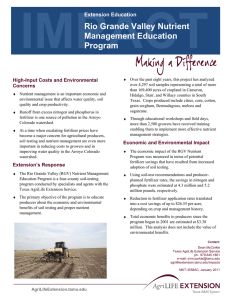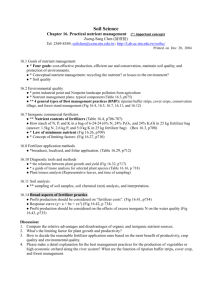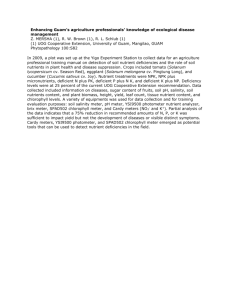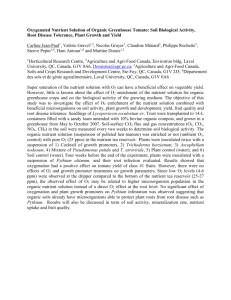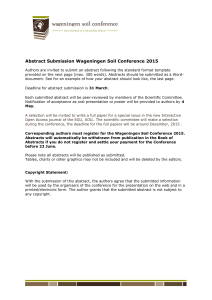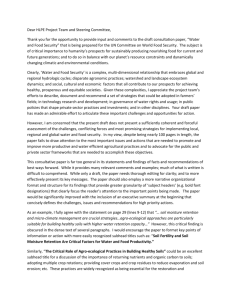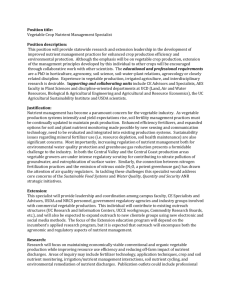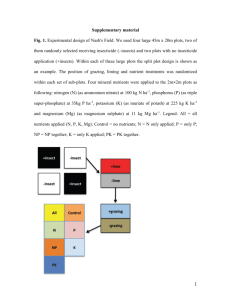What are the 4R`s? (Poster)
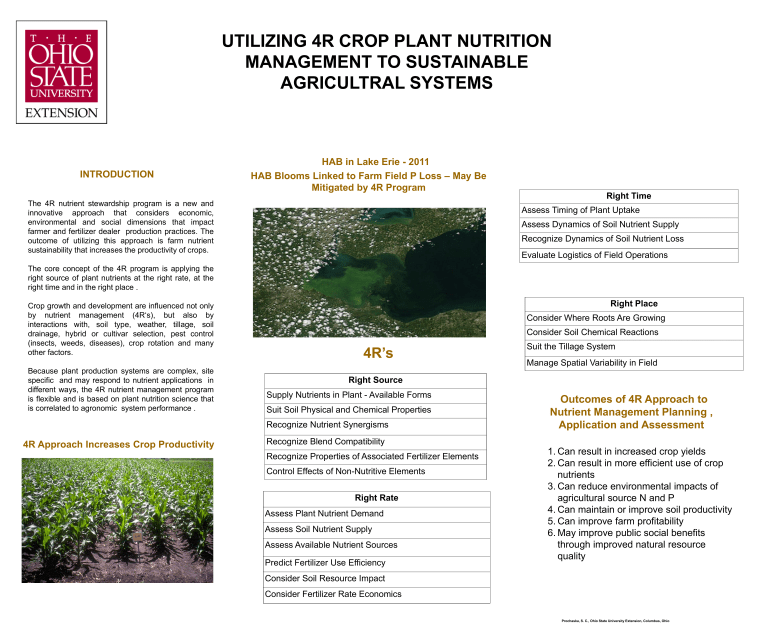
UTILIZING 4R CROP PLANT NUTRITION
MANAGEMENT TO SUSTAINABLE
AGRICULTRAL SYSTEMS
INTRODUCTION
The 4R nutrient stewardship program is a new and innovative approach that considers economic, environmental and social dimensions that impact farmer and fertilizer dealer production practices. The outcome of utilizing this approach is farm nutrient sustainability that increases the productivity of crops.
The core concept of the 4R program is applying the right source of plant nutrients at the right rate, at the right time and in the right place .
Crop growth and development are influenced not only by nutrient management (4 R‘s), but also by interactions with, soil type, weather, tillage, soil drainage, hybrid or cultivar selection, pest control
(insects, weeds, diseases), crop rotation and many other factors.
Because plant production systems are complex, site specific and may respond to nutrient applications in different ways, the 4R nutrient management program is flexible and is based on plant nutrition science that is correlated to agronomic system performance .
4R Approach Increases Crop Productivity
HAB in Lake Erie - 2011
HAB Blooms Linked to Farm Field P Loss – May Be
Mitigated by 4R Program
Right Time
Assess Timing of Plant Uptake
Assess Dynamics of Soil Nutrient Supply
Recognize Dynamics of Soil Nutrient Loss
Evaluate Logistics of Field Operations
4R’s
Right Source
Supply Nutrients in Plant - Available Forms
Suit Soil Physical and Chemical Properties
Recognize Nutrient Synergisms
Recognize Blend Compatibility
Recognize Properties of Associated Fertilizer Elements
Control Effects of Non-Nutritive Elements
Right Rate
Assess Plant Nutrient Demand
Assess Soil Nutrient Supply
Assess Available Nutrient Sources
Predict Fertilizer Use Efficiency
Consider Soil Resource Impact
Consider Fertilizer Rate Economics
Right Place
Consider Where Roots Are Growing
Consider Soil Chemical Reactions
Suit the Tillage System
Manage Spatial Variability in Field
Outcomes of 4R Approach to
Nutrient Management Planning ,
Application and Assessment
1. Can result in increased crop yields
2. Can result in more efficient use of crop nutrients
3. Can reduce environmental impacts of agricultural source N and P
4. Can maintain or improve soil productivity
5. Can improve farm profitability
6. May improve public social benefits through improved natural resource quality
Prochaska, S. C., Ohio State University Extension, Columbus, Ohio
